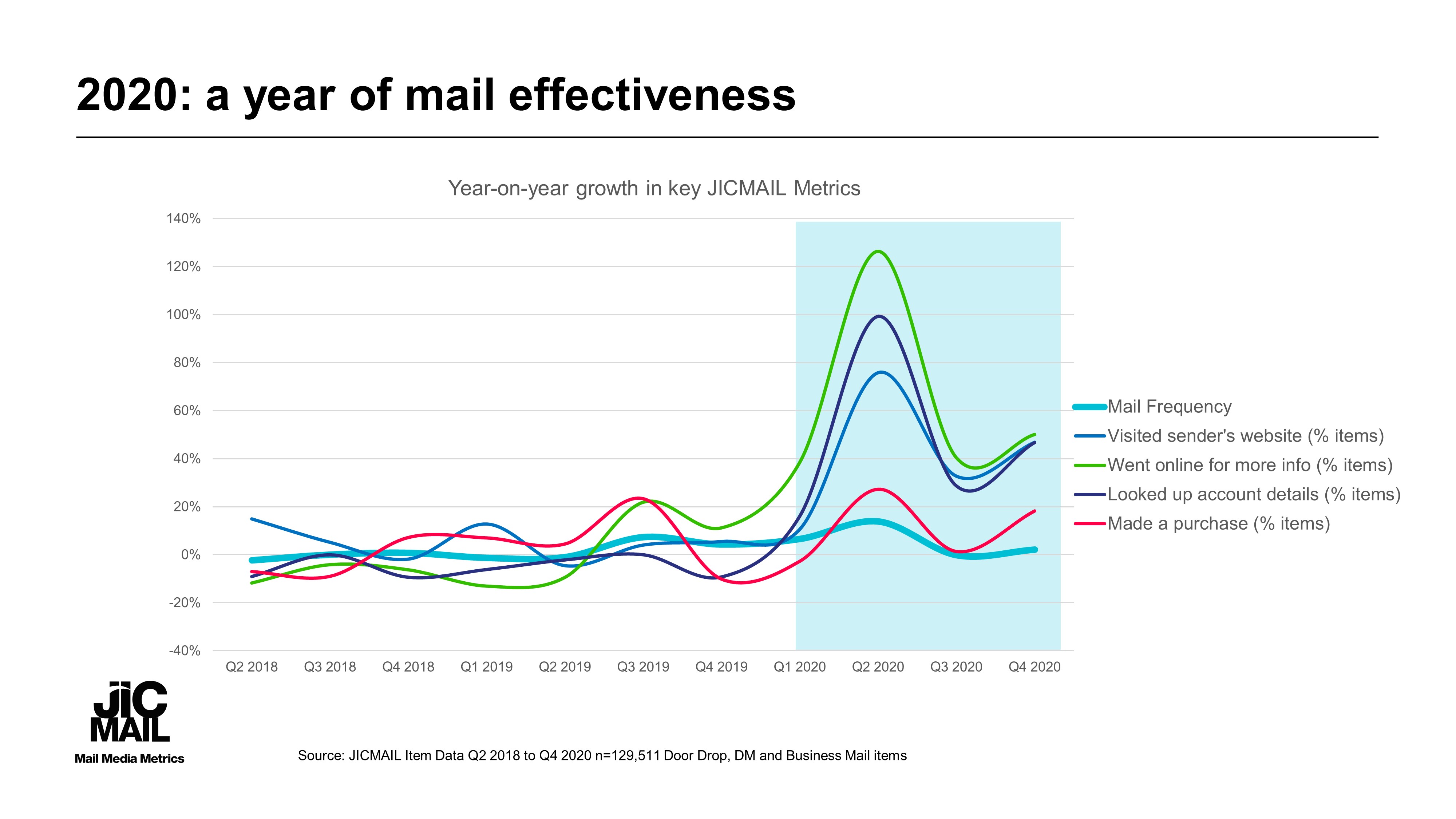Direct Mail Driving Conversions with Greater Efficiency
- Direct Mail

Direct Mail Driving Conversions
Cutting through the noise online is harder than ever for marketers, with the kaleidoscope of channels all vying for budget. Where Google Ads was once the go to platform to deliver your advertising message, today we’re spoiled for choice.
Interestingly, recent research from JicMail found that during this digital marketing overload, direct mail is having a renaissance.
Data shows that in 2020, an average of 8.4% of direct mail in the UK drove traffic to websites.
On top of this, 5% of direct mail was responsible for potential customers looking up business details online.
These figures are especially interesting when you compare them with the popular digital marketing channels, such as Google or Facebook. Google Ads campaigns can, on average, expect to see around 3 to 4% convert from a digital marketing campaign. (source)
Email marketing too is often championed by digital marketers, but sees an average conversion rate between 1% and 5%.
So, is direct mail really making a come back? And how can this be relevant to you and your business?
Direct mail is dead? Long live direct mail
Direct mail’s demise is one that has long been overstated. Direct mail marketing has never really gone away, although it’s reputation may have been tarnished with the ‘junk mail’ brush.
The perception of direct mail marketing as junk mail is mostly tied to the classic scattershot approach of sending un-targeted leaflets and postcards to every house in a geographic area, regardless of demographic.
This might be fine if you’re a pizza delivery company, but if you're offering a niche service, or one that caters to a specific age range or interest group, direct marketing can actually be enhanced by digital marketing techniques.
Many companies build mailing lists, of both physical addresses and emails. With this information, savvy marketers can use clever remarketing approaches to previous customers.
Building custom lists of potential business leads, delivering special offers to previous customers and using door drop mail approaches in specific income areas are all great examples of digital marketing approaches being used with direct mail.
And the benefits of direct mail lie particularly in the tangible nature of the delivery. Whereas an email is quickly lost in a never ending, and usually cluttered, stream of messages, a piece of physical mail can have an impact after days or weeks and is typically interacted with more than 4 times. When was the last time you looked at an email 4 times?
Just the facts
The data from JicMail supports these statements.
In the UK, 7% of all ad mail and business mail prompted a sale in the final quarter of 2020.
Direct mail is also spending more time in the home before being disregarded or thrown away. On average, direct mail is ‘live’ for over 8 days, with vouchers and offers rising to 9 days.
Business specific mail also stays live for over 9 days on average.
Mail also has the benefit of reaching more than one person, with direct business mail reaching 1.17 people.
Contrast this with the lifespan and reach of an email newsletter, which although it may be opened, may in fact not even be read by the recipient. In fact, 75% of all email newsletters are totally ignored, and 50% of those that are read are deemed irrelevant or ignored. (source)
For business owners, the direct mail marketing stat that probably matters most is conversions and sales.
JicMail found that 5.7% of direct mail resulted in purchases in Q4 of 2020, up 19% from the previous year.
So, it seems that direct mail is still very much alive and kicking.
Making direct mail marketing count
Direct mail can be incredibly effective when done right. Even if you’re running a digital marketing campaign, a well executed direct mail campaign can maximise conversions and improve awareness of your brand.
At Pepper Communications, we know direct mail, and we know how to make it work, whatever your industry.
Ask us about how we can make your direct mail marketing campaign pop.

